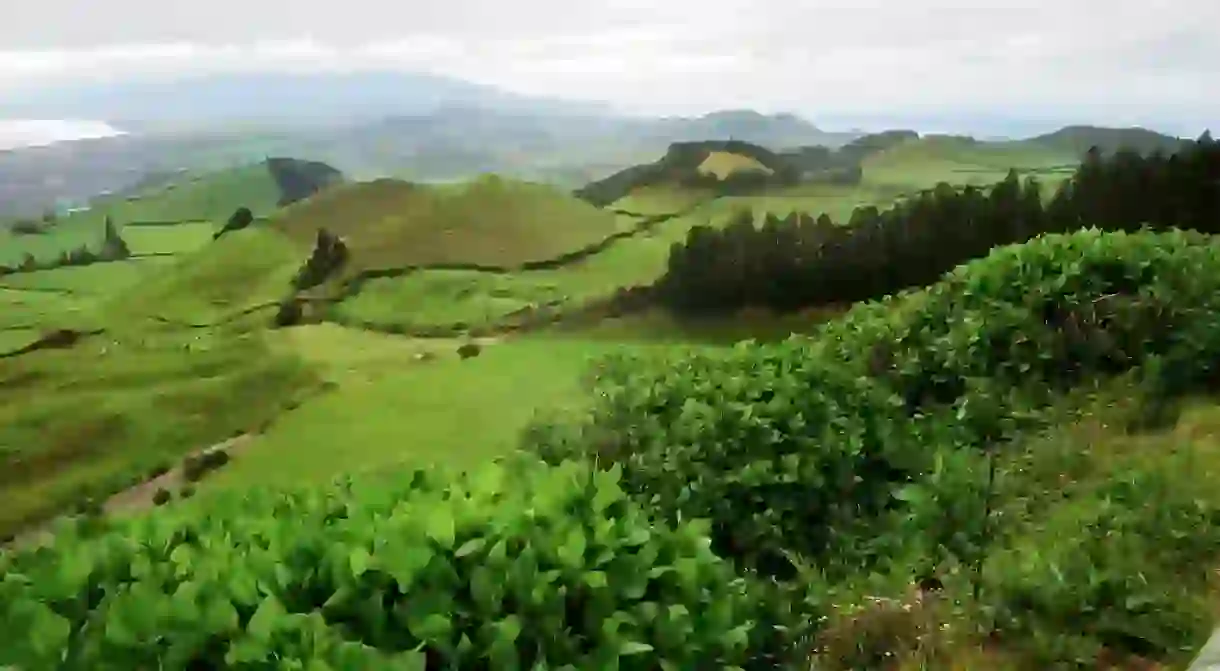These Tropical Islands Are Possibly Portugal's Best-Kept Secret

Remotely situated in the middle of the Atlantic Ocean, the Azorean islands are a treasure trove of exotic landscapes and raw, rugged nature. Aside from migrants and their relatives, continental residents from Portugal, and a few in-the-know wanderlusters, this lush archipelago remains largely unexplored. Read on to learn more about the nine islands of the Azores.
São Miguel
Most visitors head to São Miguel Island, the largest and easiest to reach by air—the airport in Ponta Delgada receives the greatest number of direct flights from Portugal, Europe, the UK, the USA, and Canada. A smaller number head directly to Terceira and Faial. There is also plenty to do to keep ambitious travelers busy for an entire vacation. This green oasis is covered in rolling hills and speckled with waterfalls, lakes, and hot water springs. The black sand beaches that surround it add hints to the volcanic nature of the region, as do the geysers in the city of Furnas where traditional pork and vegetable stew, known as cozido, is cooked underground. Also, don’t miss the kissing lakes known as Sete Cidades; one is blue and the other is green, which adds to the area’s photo opportunities.
Capital: Ponta Delgada, an attractive and bustling city
Must visit: Furnas; Sete Cidades; many poças (hot water springs); Lagoa do Fogo (a crater lake)

Terceira
Terceira is the third largest island of the group geographically but the second largest in terms of population. The capital, Angra do Heroísmo, is a UNESCO World Heritage Site. It was once a trade center during the Age of Discoveries and today it is covered in beautifully-constructed buildings within the historic center. The island’s capital is also a good place to sign up for a whale watching trip. In the center of the island, the Algar do Carvão attracts brave adventurists who don’t mind going in a cave with a volcanic origin. For beaches, head to Praia da Vitória, one of the island’s most popular spots for swimmers and sunbathers. In Terceira, keep an eye out for bulls; the island partakes in “running of bulls” during the June Santos Populares festivals.
Capital: Angra do Heroísmo
Must see: Algar do Carvão; Praia da Vitória; Biscoitos village

Pico
Pico’s major standout feature is its mountain of the same name (meaning “peak”); it reaches 2,351 meters and is the highest in all of Portugal. While visiting, also try a wine tour or have a picnic in the botanical garden Parque Florestal de Sao Joao.
Must do: Hike Mount Pico

Faial
Faial’s Varadouro natural swimming pools may be the best spot for a swim. While all of the Azores are fantastic for marine activities, Faial is the nautical center; the University of the Azores department of oceanography is located on the island. Faial is also home to one of the most popular craters, Caldeira, which is surrounded by blue hydrangea flowers. Fly directly into Faial through the Horta airport or take a ferry (Pico is the closest neighbor). Speaking of Horta, the picturesque town hosts a festival every year in August that celebrates the oceans called Semana do Mar.
Capital: Horta
Must visit: Monte da Guia for the views

Flores and Corvo
São Jorge

Graciosa

Santa Maria














